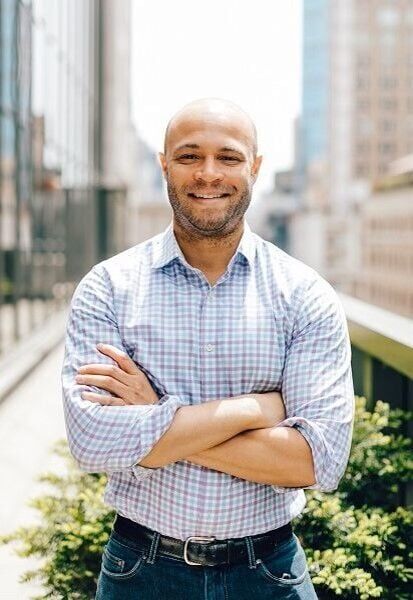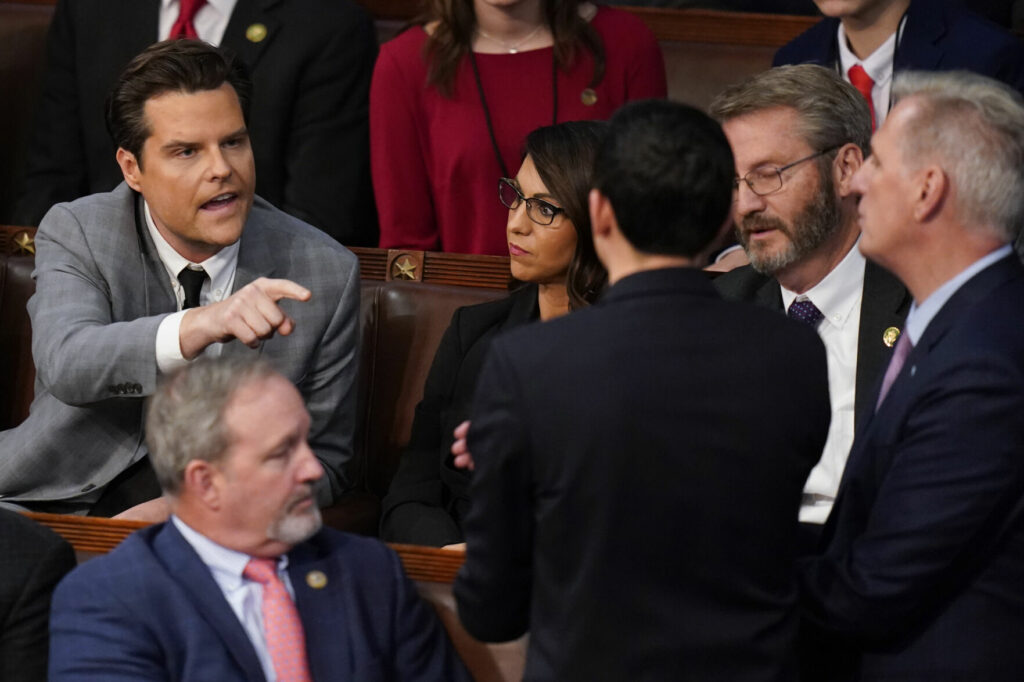Denver school board candidates talk SROs, transportation, declining enrollment | DENVER VOTERS GUIDE

Denver Public Schools Board of Education candidates this week discuss the return of school resource officers (SRO), whether a mil levy for transportation is needed and the effects of declining enrollment.
In just four weeks, voters will decide who represent them on the school board.
The Denver Gazette asked the field of eight candidates a wide range of questions from declining enrollment, campus safety and busing. Each week, The Denver Gazette will publish a number of the responses from each candidate.
Previous questions included the discipline matrix used for problematic student behaviors and spending priorities, among others.
Here are the questions for this week:
Do you support returning school resource officers to campus? Why or why not?

Scott Baldermann (District 1): Yes. I drafted the policy in June 2023 to return SROs. The policy defines the role of the SRO, which is to provide safety and build positive relationships with students. School administrators shall address school discipline issues. This will ensure the district and SROs do not introduce students into the criminal justice system for minor issues.

Marlene De La Rosa (District 5): The current board approved returning school resource officers (SRO) and is in the process of revising the memo of understanding between the district and the Denver Police Department. I support each individual school being able to decide whether or not to have an SRO, as a component of an extensive safety plan that includes ongoing monitoring of citations. A one-size-fits all policy in regards to returning SRO’s will not meet the varying needs across DPS schools.

Charmaine Lindsay (District 5): I feel I bring a perspective to the board that has enabled me to change the beliefs held by a majority of the board from 6-1 being opposed to SROs to 4-3 vote to allow schools to bring them back. Safeguards include quarterly monitoring tickets issued by officers to make sure that the SROs are only in the buildings to address personal safety. It is the goal of all involved to keep children out of the criminal justice system for normal adolescent behaviors. Monitoring review will include oversite over the number of students of color who are targeted for tickets.
Kimberlee Sia (District 1): SROs have the opportunity to be key members of the school community they serve. SROs should receive appropriate training on their responsibilities as a member of the school staff. Additionally, SROs should participate in school-based training related to the campus and staff culture, school safety measures, family and community engagement and school procedures and expectations.
While there are instances where evidence states SROs can contribute to the school-to-prison pipeline, with purposeful relationship development and clear expectations, there is also evidence that SROs can be trusted, caring adults in schools who are invested in keeping the entire school community safe.

Adam Slutzker (District 5): If it continues to be funded by the mayor’s office, I am open to partnering with SROs, as long as they are well trained in the job expected of them. Generally, I don’t believe they are the best resource toward keeping our students safe and would rather see money spent on mental health and social services.

Kwame Spearman (At-large): We should have never removed SROs from schools in 2020 without a clear plan on how to ensure students and teachers would remain safe. I support SROs in schools presently, as do more than 70% of residents. Our community is afraid to send our children to our schools and we must change that. We must immediately reimagine the role of SROs and reconsider how they’re deployed to prevent unnecessary ticketing and targeting of Black and Latino students. And we must aspire to remove guns from schools and believe that we can keep our schools safe without police officers.

John Youngquist (At-large): Three years ago, I was one of seventeen principals who asked the board not to remove SROs because they did not have another plan to keep schools safe. There is still no other plan in place. There is not even a written agreement between DPS and DPD defining their work. The only action that has been taken since 2020 has been to replace SROs after children and adults were tragic victims of gun violence. Until there is another answer to the support and service that is provided by an SRO, they will remain necessary components for school safety in DPS.
Would you support a mil levy transportation on the ballot to pay for busing students to ensure racial and ethnic diversity in schools?
Baldermann: Transportation is critical, but creating a mill levy for transportation is not necessary. Efficiencies can be created by addressing declining enrollment through merging schools. The district’s CFO recently stated that $28M could be reallocated to resources and services (eg. transportation) through thoughtful mergers. I would prefer a mill levy to increase SSP (special service provider) salaries to increase supports for students with IEPs (individualized education programs).
De La Rosa: I would support meaningful, practical concerted efforts to support racial, ethnic and socioeconomic diversity in schools. Additionally, support efforts to erase socioeconomic roadblocks for families in attending schools which meet the needs of their students. DPS like many school districts are facing a crisis in hiring and retaining bus drivers.
Lindsay: While I completely agree that there is a need for diversity, I do not support busing students. This has been done in the past and has not produced equitable results.
Sia: I would support a mill levy for transportation on the ballot that focused on providing district-wide transportation that would allow all students and families to take full advantage of the district’s robust school choice system. With mill levy transportation funds available to support additional bus routes, higher bus driver pay and the placement of additional staff on buses to support safety, families who want to participate in choosing a school that best meets the needs of their child can do so without facing the barrier of having limited transportation options available.
Slutzker: I would support nearly any mil levy that raises money for education. As for busing, I think we need to reconsider how our school choice programming currently works and how it could be amended to better create more racially and ethnically diverse schools.
Spearman: I will support a transportation mill levy, but do not support mandatory busing of students out of their neighborhoods. Instead, we need more budget flexibility to ensure all neighborhoods have excellent schools and parents have the ability to choose where they go. Funding our transportation via mill levy will allow us to divert funds to increase teacher compensation and support services and decrease class sizes. We also need to pay our bus drivers living wages, so we can properly recruit. Presently, we’re so short staffed, we cannot even bus our athletes to compete against each other across the district.
Youngquist: I was both a student during busing in Denver in the 1980s and a principal when busing was halted in 1995. There are all kinds of questions related to whether busing effectively integrated schools across Denver then and those same questions will be applied to additional levels of complexity today. At this moment, no, I would not support a mill levy. I do not believe the citizens of Denver would approve a new tax for this interest when they have not been presented with a deep and thoughtful plan relating to the future of our schools.
Declining enrollment in the district could lead to additional school closures. What metrics, in your opinion, should be used in deciding which schools to close?
Baldermann: Schools are the center of our communities, and we cannot make these decisions lightly. Current enrollment size and test scores should not determine school closures. Holistic factors such as the number of students in the neighborhood, building age, air conditioning status, accessibility into the building, language services offered, special education services offered, availability of sidewalks, major roads, and other unique conditions in the region should determine which schools are closed and merged. Ultimately, I want the district to partner with the communities and the City to determine what schools they want in their neighborhood.
De La Rosa: In the event that there is a need for a school closure, the district should engage in meaningful community engagement to make families aware of the possibilities of closure well in advance. In order to determine a closure, there should be specific metrics such as current enrollment, projected enrollment, equity metrics, and needs of the specific school community. Furthermore, the ability of a school to meet all the necessary services to serve the whole child. For example, having a school nurse, psychologist, social worker, music art, and other specials.
Lindsay: The school board is currently completing a policy to address declining enrollment. Difficult decisions are going to need to be made and it will be essential that we engage the affected communities and the impacted schools in the discussions. One of the possible solutions will be to cap enrollment at some schools that have large populations and to limit class sizes at all schools. The focus needs to be on equitable outcomes that minimize trauma and maximize diversity.
Sia: Tough decisions need to be made regarding consolidating schools due to declining enrollment. These decisions should be managed in a thoughtful, transparent manner and be made with our community. I would approach these decisions with a focus on ensuring the needs of all students are met, educators have the resources necessary to ensure students are thriving in school, and community voice is informing the decisions. Metrics would include the learning needs of students, social-emotional/mental health supports available at the school, elective/enrichment opportunities at the school, and multi-year financial projections for maintaining consistent student supports at the school.
Slutzker: We need to consider a variety of metrics beyond just student enrollment numbers including but not limited to; student/family satisfaction, student academic success, staff retention and satisfaction, what communities are being impacted by closure decisions and are those decisions equitable and finally financial constraints
Spearman: I believe with great schools in every neighborhood, we can mitigate the need for closure. We lose 8% of our students to private schools and students leaving the district. We also have 400,000 students in adjacent districts that could come into DPS through choice. Great schools will bring us more kids. We can also work with the community to provide wrap-around services and other uses of space to ensure schools are community hubs for our great neighborhoods. I do not believe simply because a school is under-enrolled means it needs to close. Instead, we need to focus on innovation.
Youngquist: The DPS Board treats school closure as though it is a surprise brought to our doorstep every October. Whether there is a need to close schools is not an issue to be solved in two weeks or two months of discussion. DPS leadership needs to design an ongoing 12-to 18-month process of research, community engagement and decision-making. Information should include current and forecasted district financial status, current and future population trends (city-wide & specific neighborhood), financial costs of running each school site as well as potential for mixed use of facilities (small/micro school, non-profit, other services).
Editor’s note: Candidate Brittni Johnson did not respond to The Denver Gazette questionnaire.














